Sorted by date Results 35 - 59 of 62
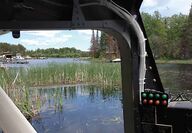
Kirk Hiner keeps a hangar at Warroad, Minnesota. He uses his RV-10 to fly to Warroad at Bonanza speeds, transfers to the Rebel on floats, and flies to the Angle, eliminating the 1 ½ hour drive and the Customs hassle. (Like others, he may be able to fly all the way if the Northwest Angle public airport is ever completed). We were going fishing at the Angle, so I flew to Warroad separately, as Kirk would be staying longer than I would to get the cabin ready for the season (a handy way for m...
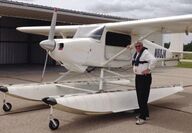
The Hiners had previously built a CH-300-and also completed a set of amphibious floats for it. Like every other floatplane operator, they were always looking for an aircraft with MORE-more range, more cabin room, more baggage room, and more performance. They found what they were looking for in the Rebel. After assurances that the previously-built floats would work on the Rebel, the deal was sealed. If the Rebel looks vaguely familiar, it may be because the design was partly scaled down from the...
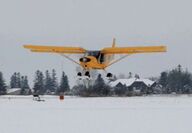
FLYING THE ZENITH 750 On the day that I flew the Zenith. The winds were directly across our main runway, gusting to 17. I own a Kitfox LSA, and I wondered what the ground handling would be like. I need not have worried-the nosewheel is steerable, and there was no wing-rocking like you would find in a Cessna 150 in those winds. There was nothing different about the runup, and in short order, we were ready to fly. Kirk suggested minimal flaps for this first takeoff in a crosswind-like my Kitfox or...

The airplane is owned and was built by Jim and Kirk Hiner, of Kenyon, Minnesota. See the sidebar about the Hiners-it is an inspiring story about a father-son relationship-and their shared love of building and flying airplanes together. I've always admired the design of the 750-if not the looks of it. It isn't an ugly airplane-but it IS a utility airplane-and with utility airplanes, "form follows function". It features a unique wing set above the cabin (the better to make more room in the cabin...
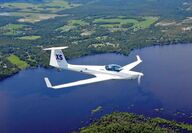
The takeoff was "taildragger standard"-by the time the power was fully in, the tail wanted to come up. Even with a 9 knot 45 degree crosswind, the Ximango tracked the centerline dueto its 9' wide gear and the powerful controls. I allowed the aircraft to accelerate in a levelattitude on the main gear, then applied back pressure. The aircraft flew off at about 50-I held that attitude as the aircraft accelerated. "Climb at the yellow triangle-best rate of climb speed" Greg coached. I dutifully...
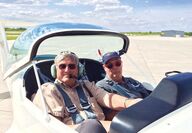
It was getting harder and harder to find a unique aircraft that I hadn't flown before, but since the start of this series, I've been offered the chance to fly some really unique aircraft. Taking them in sequence, this is the 324th aircraft I've had the pleasure of flying. The Ximango (pronounced "Zee-mon-go") motor glider is made in Brazil-an adaptation of the "stick and fabric" French Fournier motor glider-but modernized with carbon fibre construction. I had wanted to fly this little beauty...
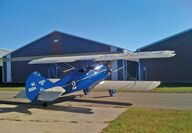
Jim Hanson This is my 321 unique type of aircraft flown. As mentioned previously, there is no set standard for aircraft flown. It's up to the individual as to how he/she counts them. My criteria are that I must make a takeoff or landing, no holding the controls in cruise. By making a takeoff or landing, I get to experience the ground handling, the acceleration, the effect of controls over differing airspeeds, and the rate of climb or descent. I don't automatically count a suffix model, only...
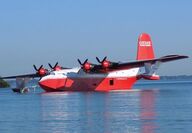
Every year, when I return from the EAA Convention (nobody calls it Airventure), people ask, "How was Oshkosh?" Usually they don't mean how was the city, and they don't mean how was the show? Most people mean "What did you learn there?" People have been going to Oshkosh since, well, since the EAA Convention moved there when the Convention outgrew Rockford, Illinois. The Convention had become so popular that it also outgrew its own self-proclaimed boundaries as a convention of builders of home-bui...
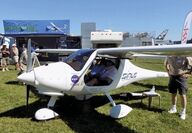
Time to turn the fun up another notch, and shut the engine down! Paul explained that we had to let the engine cool and stabilize. The time to do so was minimized due to the liquid cooling on the Rotax. "Just bring the power back to idle and hold altitude," he advised. "When the airspeed gets below about 50, shut the ignition off and pull this big knob in the center of the panel to feather the prop." The clean airframe took nearly a minute to slow down. On feathering the prop, it got very quiet,...
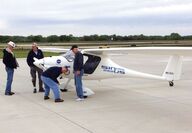
When flying any new aircraft, I like to study it first. I look it over carefully. In this case, I noted the long wings, the glider-like T-tail, the wide and roomy cockpit. Paul and I conducted a pre-flight, with Paul explaining what we were looking at. The aircraft is powered by an 80 hp Rotax 912 4-stroke water-cooled engine, the most common engine for LSA aircraft. Rotax makes a 100 horsepower version, and I asked Paul why it wasn't installed. "Reason number one is, you don't need it" he...
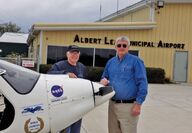
Most pilots enjoy flying different kinds of aircraft. Each aircraft has its own handling characteristics, performance, and even its own personality. In my aviation career, I've been able to fly a number of aircraft-320 to date. The person who has flown the greatest number of different aircraft is Royal Navy Pilot Eric "Winkle" Brown with 487 unique types flown. Brown, now 96, flew for the Royal Navy before WW II, was engaged in engineering and experimental test flying during the war (including...
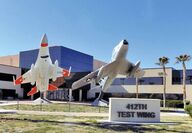
With a lull in the action at the runway, we toured the ramp at South Base. I was surprised to see a fleet of Skyhawks, and a T-42 Beech Baron. "Base flying club" said Haire, reading my mind. It's nice to know that these hot rocks types still appreciate flying for itself. I noticed a number of older aircraft on the ramp. Once again, Haire read my mind. "Those are destined for the new museum, whenever it gets built," he explained. "Unlike Wright-Patterson (the Air Force Museum) the museum here...
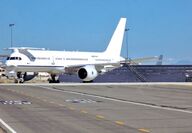
The next day, I met Haire at Century Circle, a collection of Century Series aircraft located just outside Edward's West Gate. Haire is a retired Army Aviator, who flew Huey's, Cobras, and Chinooks. He paired us up with the Dutch photojournalists, and he asked what I wanted to see. I explained that I wanted to do an article about Edwards, then and now, the Right Stuff era, and what was happening today. He asked if I had visited Edwards before. I replied, "Sort of." Back in 1981, I was living in...
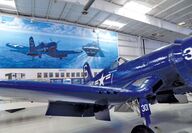
Most pilots of any age have had at least a fleeting desire to visit Edwards Air Force Base. During WW II, it was the site of "Special Projects" and testing. Military personnel might be aware that something secret was going on at "Muroc" as it was then called, but information was only distributed on a need-to-know basis. During the war, flight testing was transferred from Wright-Patterson Air Force Base in Dayton, Ohio to the wide open spaces of the high desert in California. Captured enemy...
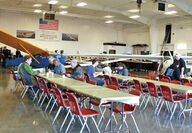
The Problem Like so many things that we "know" to be true today, facts are fungible. What may have been good advice 20 years ago is not good advice today-yet these false "facts" remain in place until proven on longer to be true. Aviation is no different in this regard-"hangar tales" and hoary old myths are slow to change. As an FBO operator, I can't tell you how many people have told me "I always wanted to fly, but my teacher told me that I had to have 20/20 vision"-or "My teacher told me that...
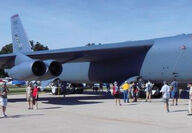
I go to Oshkosh (nobody in aviation calls it "Airventure") every year to cover what's new in the industry. It's a chance to try to gauge the health of the industry - to try to spot emerging trends - to see what products and programs get people excited. Some years are revolutionary, with new products introduced. Some are evolutionary - like baby elephants, products conceived years before are just now reaching the end of their gestation period. This was one of those years - very few NEW...
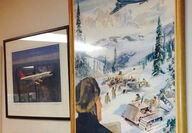
Jim Hanson It's cold and windy outside, and the days are short. Not exactly great fun-flying weather-but if you want your "aviation fix" to help get you through until Spring - here's a suggestion. Visit the NWA History Centre. (Note: This is also a good place to go if the rest of the family wants to go to the nearby Mall of America). Never heard of it? Most people haven't - unless you are a former Northwest Airlines employee. I was unfamiliar with it as well, but I serve on the Boards of...
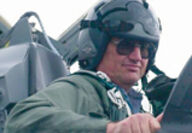
• Began service delivering the mail on CAM 9 (Minneapolis/Chicago) in 1926, using two rented, open-cockpit biplanes. • 1926 — Northwest became the first airline to operate a closed-cabin airplane in commercial service, the 3-passenger Stinson Detroiter SB-1. • 1928 — service expanded to Duluth (using a Sikorski S-38 amphibian), North Dakota, and Winnipeg. • 1929 — headquartered at “Speedway Field” (site of an old racetrack, now MSP International) • 1930 — headquarters relocated to St. Paul...

According to the narrative of the NWA History Centre, there were 13 airlines represented in the history of Northwest Airlines. Following are excerpts from that history: “During its first 60 years Northwest Airlines grew into one of the world’s legacy airlines without acquisitions or mergers. The Airline Deregulation Act of 1978 changed the rules of commercial aviation and Northwest began to adapt in order to survive and prosper. In 1986 Northwest merged with Republic Airlines. That merger mad...
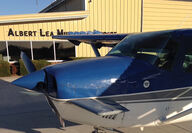
Last year, I had a friend ask me to find him an airplane. That's always a loaded and open-ended task. Another friend told him "You ought to buy a Super Cub." Most aircraft dealers would be happy to find just the kind of airplane the customer asked for - but this man is a friend - and I knew a Super Cub was not the airplane for him. I asked him to better define his intended mission - and his budget. The prospective airplane owner is an avid hunter. To support his hunting habit, he owns several...

"How did we get this way?" Jim Hanson I picked the age of the AOPA and FLYING magazines reviewed in this series (late 50s and early 60s) because it was about the time I started flying. It is also a chance to contrast and compare what flying was like back then, compared to today. The difference between that time and today are many, and in revisiting the articles and advertisements, might even give us insight as to why General Aviation (though the term hadn’t been invented yet) was in its a...

From the April, 1960 issue of AOPA Pilot — provided by Minnesota Flyer Iowa reader Phillip Carson. I’ll try to introduce readers to the old printed pages — and make my own snark-filled commentary on them as well. DISCLAIMER: These ads do not depict current products or services available for purchase today. The material referenced is only for discussion and commentary. Nothing in this article should be construed as being applicable to the product or services as sold today. It was the last gasp...

Jim Hanson I save all my back issues of aviation magazines—literally, over 3000 pounds worth in the last 50 years. My wife calls me a “pack rat” — a “hoarder” — I tell her it is for “research”. In reality, I do use them for research — if people want to know anything about an aircraft they are considering, I can usually find them a pilot report. Business use aside — the old magazines are just fun to look through! If my own collection of magazines were not enough, people have given me a numbe...
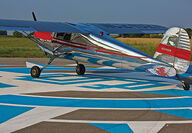
The 99s-an international association of women pilots, (there were initially 99 charter members) recently completed a new compass rose for the Albert Lea Municipal Airport. The old compass rose had been obliterated during a recent paving project. Marcy Drescher is a local "99", and contacted Albert Lea Airport. She was aware of the construction, and the need for restoring the compass rose so pilots and mechanics could accurately swing their compasses. While a more utilitarian compass rose could...
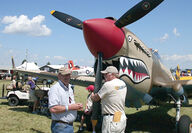
There are some years at Airventure (Oshkosh) that are “breakthrough” years — notable for the appearance of new aircraft, avionics, or technologies. The “I-Pad Revolution” a couple of years ago would be a good example. This year was not one of the “breakthrough” years but that’s OK. Let me tell you why. Many of us go to Oshkosh to see “What’s New” in General Aviation. Almost anything new is usually showcased there. Evolving technologies usually take several years to come to market — some are onl...